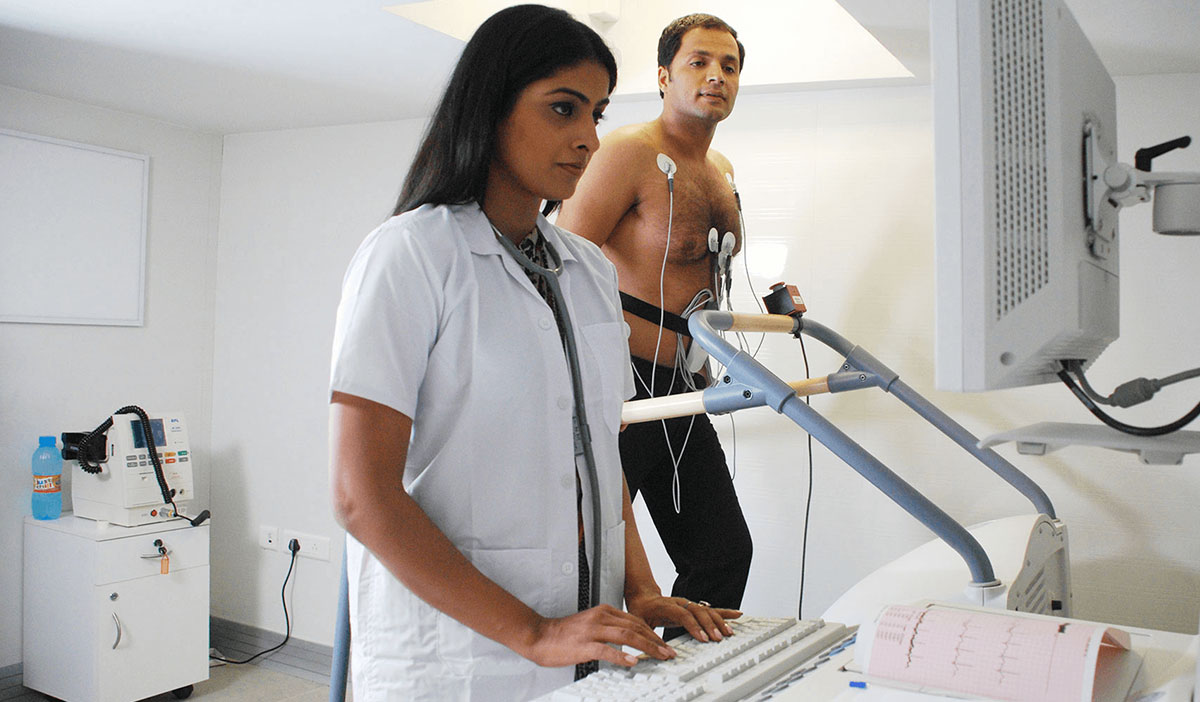
TMT TEST(Treadmill Test):-
TMT TEST: PROCEDURE, RISKS, AND RESULTS
A healthy heart is essential for the proper functioning the body’s organs. The significant factors that impact heart health include increased stress among people and changes in their lifestyles and diets. The TMT test (the treadmill test) is used to evaluate heart function in persons with diabetes who are at risk for heart disease, have a past of heart disease, or have undergone cardiac treatment.
The TMT test (the treadmill test) or exercise stress test determines how far your heart can run before experiencing irregular heart rhythms or decreased blood supply to the heart muscle. Doctors use it to monitor your heart’s response to being pushed to a specific amount.
Why is the TMT test needed for the heart?
An exercise ECG (electrocardiogram) or a cardiac stress test is often known as a treadmill test (TMT). The treadmill test is a standard procedure used to determine the following:
- Whether or not your heart receives enough blood supply
- How do you compare to other persons your age and gender in terms of physical activity (riding a treadmill or stationary bike)
- If your indicators, such as shortness of breath, chest discomfort, a racing heart, or even dizziness, can be replicated while engaging in physical exercise
This makes it easier to discover and evaluate specific heart problems, such as:
- Muscle or valve problems
- A sufficient blood supply to your heart muscle
- Your heart’s electrical stability during rest and exercise
This treadmill exercise stress test assists doctors in determining if you require extra, often more intrusive, testing to validate a diagnosis or if the treatment lowers your chance of having a heart attack and makes you feel better.
Get Ready for the TMT test
Your doctor will perform a physical check-up and ask about your medical history before your test. Inform our doctor about your symptoms, particularly chest aches or shortness of breath.
It would help if you also informed your doctor about any diseases or symptoms that make exercise difficult, such as tight joints caused by arthritis.
Finally, if you have diabetes, inform your doctor because exercise impacts blood sugar levels. If you have diabetes, your doctor may need to examine your blood glucose levels while you exercise.
Your doctor will provide you with detailed information on how to prepare.
Medication and food
Your doctor may advise you to refrain from eating or drinking caffeinated beverages for three hours before the test. It is also ideal to refrain from smoking.
Only cease taking medications before the test if your doctor instructs you to.
Clothing and personal belongings
Dress in loose, comfortable attire on the day of the test. It is better to wear something light and airy. Also, wear shoes that are comfy, such as sneakers.
Risks of TMT test
The treadmill test is typically regarded as safe, mainly when performed in a controlled atmosphere under the guidance of a competent medical expert.
However, there are some uncommon dangers, such as:
Chest pain
Fainting
Heart attack
Irregular heartbeat
However, because your doctor will screen you for concerns beforehand, your chances of suffering these reactions during the test are low. As a result, people more likely to have severe consequences, such as those with advanced coronary heart disease, are rarely invited to take the test.
Procedure of TMT test
- 1. A technician checks your vital signs, such as your resting heart rate and blood pressure.
- 2. Small adhesive discs (electrodes) are attached to your chest and arms. The electrodes are connected to the ECG (electrocardiogram) device.
- 3. You stroll on a treadmill
- 4. As time passes, the speed quickens but remains moderate.
- 5. Technicians and exercise physiologists will ask how you regularly feel.
- 6. The test concludes after you have maintained your goal heart rate for some time sufficient to collect data on heart function, which is usually 7-10 minutes. Your goal heart rate is higher than at rest, which is determined by your age and exercise level.
- 7. If you have significant symptoms or wish to terminate the test, technicians may halt it early.
After TMT test
- After the test is completed or stopped, the doctor will evaluate your signs, heart rate, blood pressure, and ECG until they return to normal. This takes approximately 5 minutes. You can go home once your heart rate has stabilized.
